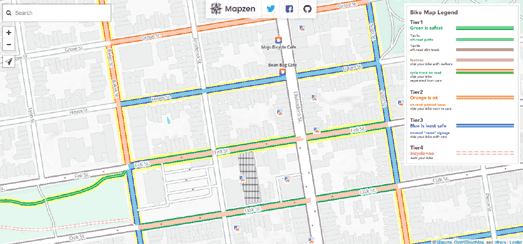Сообщения
Сообщения за март, 2017
Play Ms Pacman on Google Maps
- Получить ссылку
- X
- Электронная почта
- Другие приложения
How Does Your Commute Compare
- Получить ссылку
- X
- Электронная почта
- Другие приложения
The Top 100 Cultural Landscapes in Spain
- Получить ссылку
- X
- Электронная почта
- Другие приложения
Mapping NSA Intercept Sites
- Получить ссылку
- X
- Электронная почта
- Другие приложения
Meander Maps of the Mississippi
- Получить ссылку
- X
- Электронная почта
- Другие приложения
The Dot Density Map of Europe
- Получить ссылку
- X
- Электронная почта
- Другие приложения
Mapping the History of Glasgow
- Получить ссылку
- X
- Электронная почта
- Другие приложения
Tropical Cyclone Debbie Tracking Map
- Получить ссылку
- X
- Электронная почта
- Другие приложения
Alpine Ski Resorts in Danger
- Получить ссылку
- X
- Электронная почта
- Другие приложения
Mapping Global Warming
- Получить ссылку
- X
- Электронная почта
- Другие приложения
A World Map Without Highways
- Получить ссылку
- X
- Электронная почта
- Другие приложения
Street View in the Year 2050
- Получить ссылку
- X
- Электронная почта
- Другие приложения
The Noisy America Map
- Получить ссылку
- X
- Электронная почта
- Другие приложения
The Building Age Story Map
- Получить ссылку
- X
- Электронная почта
- Другие приложения
The Geography of Murder
- Получить ссылку
- X
- Электронная почта
- Другие приложения
Comparing New York Neighborhoods
- Получить ссылку
- X
- Электронная почта
- Другие приложения
The Worldwide Waste Map
- Получить ссылку
- X
- Электронная почта
- Другие приложения
Mapping the History of Latin America
- Получить ссылку
- X
- Электронная почта
- Другие приложения
Mapping China's Polluting Factories
- Получить ссылку
- X
- Электронная почта
- Другие приложения
Safe Walking in Melbourne
- Получить ссылку
- X
- Электронная почта
- Другие приложения
City Journeys with Scrolling Street Views
- Получить ссылку
- X
- Электронная почта
- Другие приложения
The 3D Building Age Map
- Получить ссылку
- X
- Электронная почта
- Другие приложения
Eucalyptus, Sheep & Desert
- Получить ссылку
- X
- Электронная почта
- Другие приложения
The Rise of American Anti-Semitism
- Получить ссылку
- X
- Электронная почта
- Другие приложения
Satellite Image Explorer
- Получить ссылку
- X
- Электронная почта
- Другие приложения
Safer Cycling with Mapzen
- Получить ссылку
- X
- Электронная почта
- Другие приложения
3D Tube Times
- Получить ссылку
- X
- Электронная почта
- Другие приложения
Drive Time with Iscoscope
- Получить ссылку
- X
- Электронная почта
- Другие приложения
How Satellites Document Our Changing World
- Получить ссылку
- X
- Электронная почта
- Другие приложения
Where Can You Afford to Live?
- Получить ссылку
- X
- Электронная почта
- Другие приложения
The Dot Map of Education
- Получить ссылку
- X
- Электронная почта
- Другие приложения
Searching Satellite Imagery
- Получить ссылку
- X
- Электронная почта
- Другие приложения
Precog Crime Prediction for London
- Получить ссылку
- X
- Электронная почта
- Другие приложения
Live Talks for International Women's Day
- Получить ссылку
- X
- Электронная почта
- Другие приложения
LEGO Maps of the World
- Получить ссылку
- X
- Электронная почта
- Другие приложения
The Breath of the Wild Map
- Получить ссылку
- X
- Электронная почта
- Другие приложения
Visually Impaired Street View
- Получить ссылку
- X
- Электронная почта
- Другие приложения
How Healthy Are Your Neighbors?
- Получить ссылку
- X
- Электронная почта
- Другие приложения
Slavery and the Modern Jail Population
- Получить ссылку
- X
- Электронная почта
- Другие приложения






































